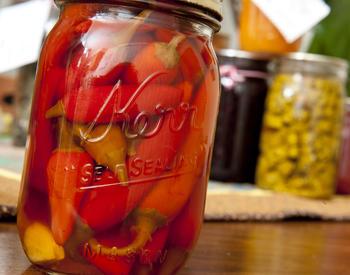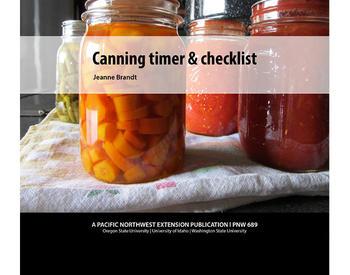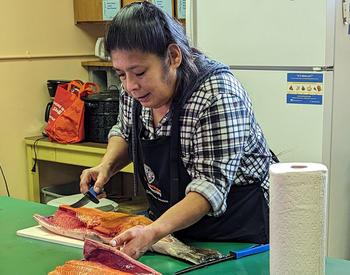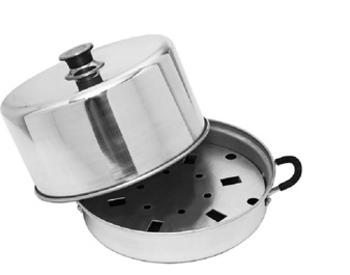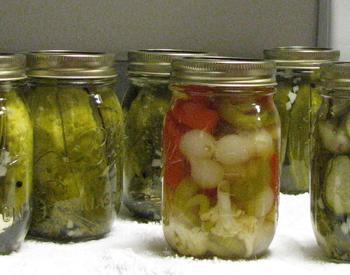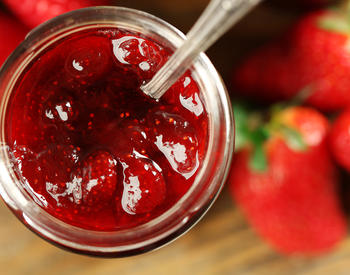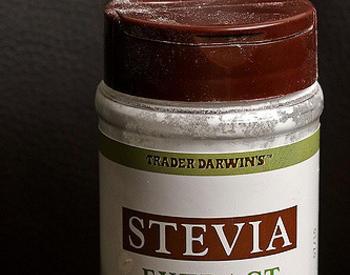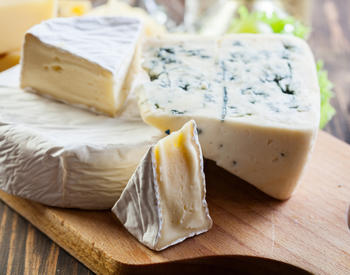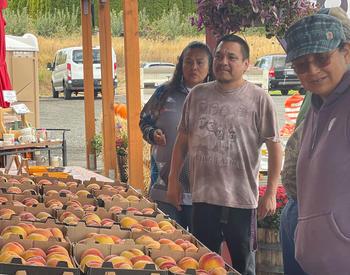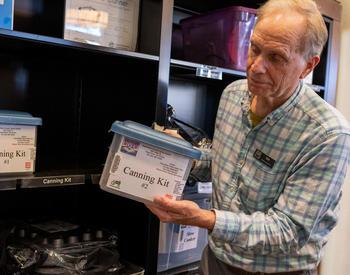Download this publication as a PDF
Many people are requesting information on preparing home-canned foods with low or no sugar and no salt. Commercially prepared diet foods are often expensive and many can be preserved safely at home. People on special diets should first consult with their doctor and registered dietitian to determine exactly which foods and amounts can be consumed.
Reducing sugar
Canned fruits without sugar
Fruits may be canned safely without sugar and no adjustments need to be made in the processing time. Absence of sugar may result in softer texture and less flavor.
For optimum flavor and texture, select fully ripe, firm fruit for canning. Use the hot pack method.
Fruits can also be canned in fruit juices to add natural sweetness. Select fruit juices with flavor and color that will complement the fruit you are canning. Good juices to use are apple, white grape, pineapple and orange. They can be diluted to the sweetness you desire. Use their juice in place of the sugar syrup. Either frozen or canned juices can be used.
Tip: Cook a few pieces of the fruit in the canning liquid. Cool and taste. Adjust sweetness accordingly. This will give you an indication of what the canned fruit will taste like.
All canned fruits must be processed in a boiling water canner to be safe.
Jams and jellies with reduced sugar
Sugar promotes gel formation in jams and jellies. The correct proportions of fruit, pectin and sugar are essential for gelling. If the sugar is decreased in the recipes that rely on pectin for thickening, the product will have the consistency of syrup rather than jelly.
There are special products for making low-sugar gelled products. These are either pectin substitutes or low-methoxyl pectins that do not require sugar for gelling. They can be found in the canning supply section of most supermarkets.
When using special pectins, you can use concentrated apple juice as a part of the fruit for a natural sweetener. Use about 1 cup concentrated frozen apple juice for every 3 cups of fruit juice or pulp.
Because sugar acts as a preservative in jams and jellies, keeping quality is changed if it is reduced. Most low-sugar jams and jellies must be processed in a boiling water canner for 10 minutes or frozen for long storage. (Follow package instructions). After opening, refrigerate to prevent mold growth.
Other sweeteners
Natural juices
Natural juices such as apple can be used in place of sugar syrups for canning and freezing fruits. Try a variety and see what you like. Good combinations are peaches in orange or pineapple juice; pears and apples in apple, white grape, pineapple, or orange; and berries in cranberry or grape juice. Fruit juice high in ascorbic acid (such as orange and pineapple juice) helps to keep light-colored fruits from browning.
Honey
Some people use honey in place of sugar in food preservation recipes. This does not reduce the sugar content of preserved foods. Two types of sugar — fructose and glucose — are the major components of honey.
Honey can be substituted for sugar in canned and frozen fruits. The flavor of honey is sweeter than that of granulated sugar so it is advisable to use less honey than the amount of sugar specified in the recipe. Be sure to use light, mild-flavored honey if you don't want noticeable flavor changes in your preserved products.
In jelly recipes without added pectin, honey can replace up to one-half of the granulated sugar. With added pectin, two cups of honey can replace two cups of sugar in most recipes. In recipes that yield small batches of five to six glasses, one cup of the sugar can be replaced by one cup of honey.
Some commercial pectin companies have honey-only jam and jelly recipes. Contact the pectin companies to request recipes.
Corn syrup
Corn syrup is made up of the sugar dextrose (glucose). Because it is not as sweet as sucrose (table sugar), it takes 2 cups corn syrup for the same sweetness as 1 cup sugar. Corn syrup can replace up to half the amount of sugar in making syrups for preserved fruits. Be sure to use light corn syrup. Dark corn syrup, sorghum and molasses overpower the fruit flavor and may darken the fruit.
Fructose
Fructose is a natural sugar found in fruit. It has the same caloric value as sucrose but is much sweeter to taste. About two-thirds cup of fructose has the same sweetness at 1 cup sucrose (table sugar). However, in order to have the product gel, substitute an equivalent amount of fructose for sucrose.
Artificial sweetener
People on therapeutic diets (such as for diabetes) should refer to instructions for low-sugar jam or sugar-substitute package labels for information on the use of artificial sweeteners.
Reducing salt/sodium
Canning low-acid food without salt
The salt added to canned vegetables, meats, poultry, and seafood is flavoring only, so can be omitted.
When omitting salt, add 2–3 teaspoons of lemon juice or orange juice to carrots, asparagus and beets. A tiny amount of nutmeg or curry can be added to green vegetables and a teaspoon of pimento or celery to corn.
All low-acid food (vegetables, meat, fish, poultry) must be processed in a pressure canner to prevent the growth of Clostridium botulinum. Follow the canning directions in up-to-date canning bulletins available from your local county Extension office.
For an added margin of safety, boil all low-acid home canned foods for 10 minutes before tasting.
Pickle with less salt
The salt in fermented pickles and sauerkraut should never be reduced. It controls bacterial growth during fermentation.
Salt enhances the flavor of quick pickles and enhances crispness, so pickles with reduced salt will have a different flavor and texture. The salt can safely be reduced in any quick pickle recipes that have at least as much vinegar as water.
Related articles
